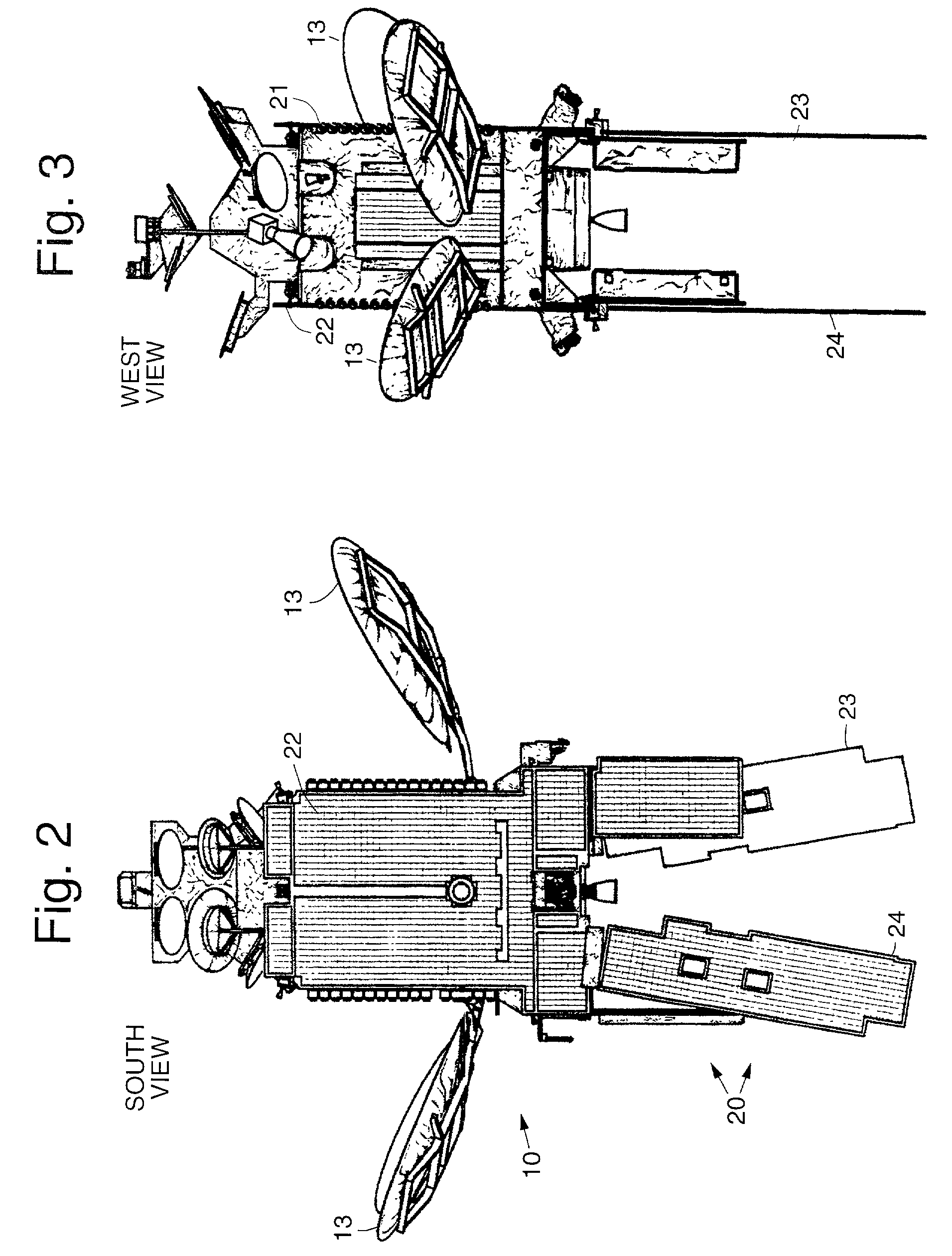Two-sided deployable thermal radiator system and method
a thermal radiator and deployable technology, applied in the field of spacecraft, can solve the problems of not being developed and two-sided deployable thermal radiators, and achieve the effects of dissipation of heat, increased capability, and improved service li
- Summary
- Abstract
- Description
- Claims
- Application Information
AI Technical Summary
Benefits of technology
Problems solved by technology
Method used
Image
Examples
Embodiment Construction
[0015] Referring to the drawing figures, FIG. 1 illustrates a spacecraft 10 employing an exemplary spacecraft thermal radiator system 20 in accordance with the principles of the present invention. FIGS. 2 and 3 illustrate south and west side views, respectively, of the spacecraft 10 and exemplary spacecraft thermal radiator system 20 shown in FIG. 1
[0016] The spacecraft 10 illustrated in FIG. 1 comprises a body 1 to which one or more solar arrays 12 are coupled. A plurality of antennas 13 are disposed on various faces of the body 11. The spacecraft 10 has a plurality of radiators 21-24, which in the exemplary embodiment comprise a north facing fixed payload radiator 21, a south facing fixed payload radiator 22, and a plurality of two-sided deployable radiators 23, 24.
[0017] The north facing fixed payload radiator 21 is thermally coupled to one of the two-sided deployable radiators 23, 24 by means of one or more coupling heat pipes 25, which are preferably loop heat pipes 25. Simila...
PUM
 Login to View More
Login to View More Abstract
Description
Claims
Application Information
 Login to View More
Login to View More - R&D
- Intellectual Property
- Life Sciences
- Materials
- Tech Scout
- Unparalleled Data Quality
- Higher Quality Content
- 60% Fewer Hallucinations
Browse by: Latest US Patents, China's latest patents, Technical Efficacy Thesaurus, Application Domain, Technology Topic, Popular Technical Reports.
© 2025 PatSnap. All rights reserved.Legal|Privacy policy|Modern Slavery Act Transparency Statement|Sitemap|About US| Contact US: help@patsnap.com



